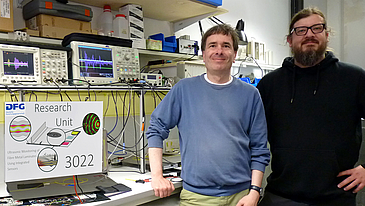The identification of component damage might initially seem simple. Is this still the case when the damage is minor and hidden? Even minimal defects can later lead to a total failure, particularly in composite materials that are used for example in wind turbines, where blade fractures can occur.
One solution might be to identify and assess hidden damage in materials using AI. That is the research goal of the interregional DFG Research Unit FOR 3022 in the second funding period, which is financed with over 3 million euros. The research group, which was originally part of the central research institution ISIS (Integrated Solutions in Sensorial Structure Engineering) of the University of Bremen under the leadership of Dr. Dirk Lehmhus, has made progress in the monitoring of fiber metal laminates with integrated sensors. These first results were published in renowned international journals. Partner universities such as the University of Siegen, TU Braunschweig, and HSU Hamburg are involved in the DFG Research Unit FOR 3022.
One particular focus of the research is the development of measuring systems that can be integrated directly into the material. The Bremen part of the research group consists of adjunct lecturer Dr. Stefan Bosse from the Faculty of Mathematics / Computer Science at the University of Bremen, the Faserinstitut Bremen e.V. (FIBRE) under the leadership of Professor Axel Herrmann, and the Institute for Microsensors, -actuators and -systems at the University of Bremen headed by Professor Björn Lüssem. They are presenting the first prototypes of sensor nodes, which are smaller than a coin and can be embedded in materials such as fiber metal laminates. These sensor nodes have the ability to autonomously transmit information about the condition of a component using RFID technology.
The interdisciplinary collaboration between computer science, microsystems technology, electrical engineering, and metrology is decisive for the project’s success. Adjunct lecturer Dr. Stefan Bosse explained: “Our research underscores the promising possibilities of AI methods. Our goal is to understand how important information can be generated from complex data and then used by humans to make informed decisions.” He adds, “From the lab into practice, so that technology can effectively support people.”
Contact:
Priv.-Doz. Dr. rer. nat. Stefan Bosse
Faculty of Mathematics / Computer Science
University of Bremen
Email: sbosseprotect me ?!uni-bremenprotect me ?!.de

